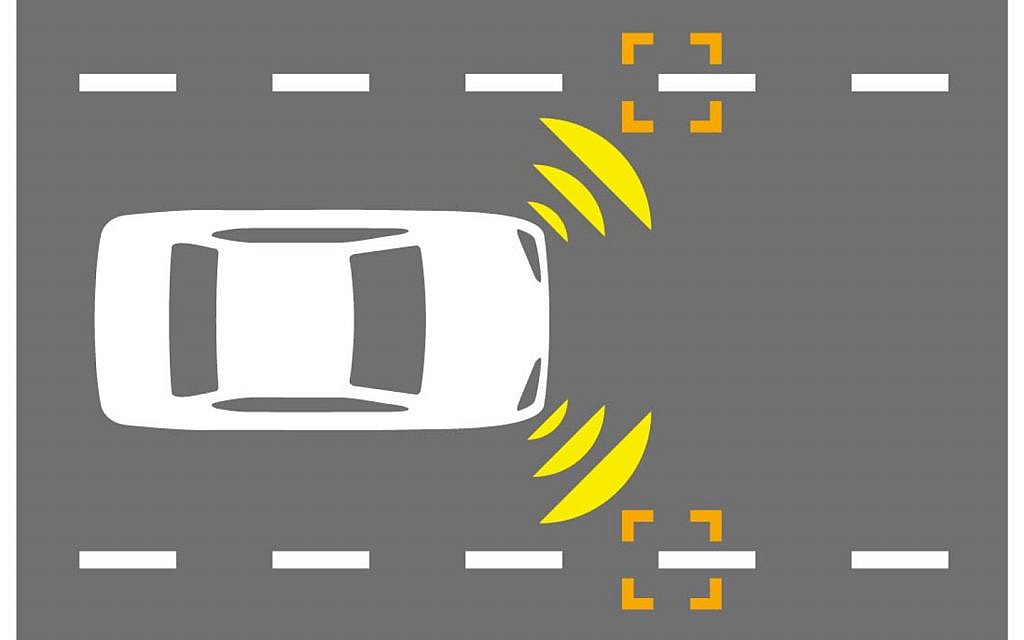All About Side Collision Warning System
Modern automobile manufacturers have made significant progress in enhancing road safety. Many vehicles now feature advanced technologies designed to protect both passengers and pedestrians. One such feature is the Side Collision Warning System (SCWS). This system detects objects or cars approaching from the side and alerts the driver through visual or audio warnings. Understanding how this system works and how it supports safer driving is essential for a safe driving experience.
What is a Side Collision Warning System?

A SCWS is a modern car safety feature that helps detect stationary or slow-moving objects near the sides of a vehicle. It uses a combination of sensors, cameras and radars to monitor the vehicle’s surroundings for potential side hazards such as other vehicles, barriers or cyclists.
In some cases, if the vehicle is equipped with Automatic Emergency Braking (AEB), the system may also apply brakes automatically, along with sending visual or audio alerts.
By offering an additional layer of protection, the SCWS helps reduce the chances of side-impact accidents, especially during lane changes or turns.
How does the Side Collision Warning System Work?
When another vehicle or object comes too close, the system sends alerts through dashboard signals, warning sounds, seat vibrations or a brief brake pulse.
It often works alongside lane change support to monitor adjacent lanes. If a vehicle is approaching from the side while changing lanes, the system alerts the driver to prevent contact.
Some upgraded systems go beyond mere warnings, actively intervening to prevent or mitigate collisions. These advanced functionalities may include automatic emergency braking, which can apply the brakes autonomously if a collision is deemed imminent and the driver doesn’t react in time. Additionally, some systems offer evasive steering assist, subtly guiding the vehicle to help the driver steer away from a potential impact. These sophisticated features work in conjunction with the initial warnings to provide multiple layers of protection, significantly enhancing vehicle safety.
They offer active safety functions that help avoid collisions through automatic steering input or lane correction. These additions improve real-time responses and enhance driver confidence.
Advanced examples include:
- Blind Spot Assist provides corrective steering or braking when a vehicle is in the blind spot.
- Lane Keeping Assist with Collision Avoidance helps maintain lane discipline and avoid close side encounters.
- Automatic Emergency Steering (AES) gently steers the car away from a potential hazard if conditions allow.
How to Activate/Deactivate SCWS?

The process to activate or deactivate the SCWS may vary by vehicle, but it generally follows two common methods:
- Through a Physical Button
Many vehicles come with a dedicated button labelled as Blind Spot Collision Warning. This button is usually located on the instrument panel or near the steering wheel. Pressing it toggles the system on or off, and an indicator light confirms whether the system is active. - Via Infotainment or Instrument Cluster Settings
In vehicles without a physical button, the SCWS can typically be accessed through the driver assistance or safety settings in the infotainment system or instrument cluster menu. Drivers can enable or disable the feature by navigating to the appropriate setting within the menu.
FAQs
Can I install a side collision warning system in an older car?
Yes, a Side Collision Warning System can be added to older vehicles using aftermarket retrofit kits.
Does the system work in all weather conditions?
The system generally works well, but its performance may be limited when driving in bad weather like heavy rain, fog or snow due to reduced sensor accuracy.
What are the benefits of using a side collision warning system?
The SCWS, along with features like the car blind spot alert system, helps expand side awareness and reduce the chances of lane-related accidents.
This was all about the Side Collision Warning System, a feature commonly available in modern vehicles. It plays an important role in improving road safety by alerting drivers to side hazards.
When buying any new or used car for sale in the UAE, it’s worth checking if the SCWS is included, as it adds an extra layer of safety.
Apart from SCWS, those interested in how collision avoidance systems work can learn more, as these systems also play a key role in driver safety.
Stay tuned to dubizzle’s cars blog for more insights into vehicle safety features.
Comments
Post a Comment